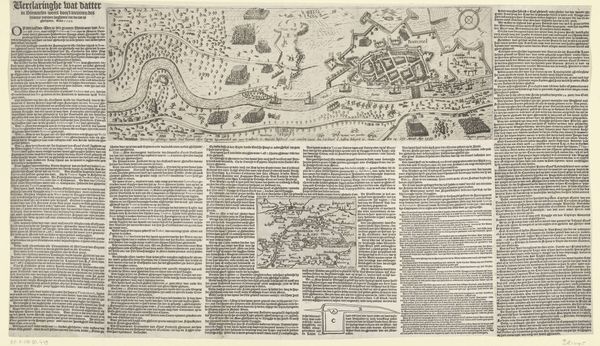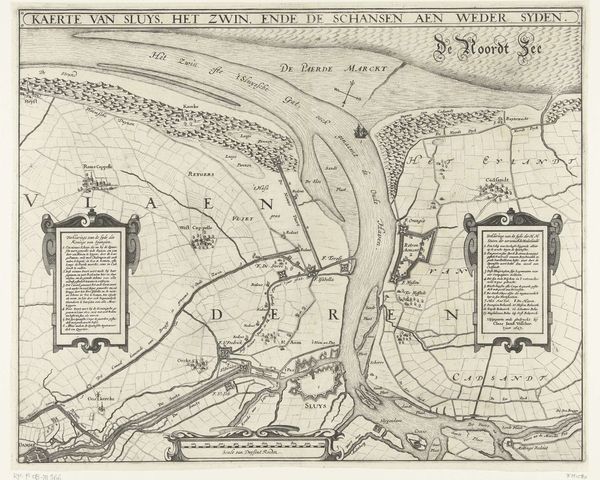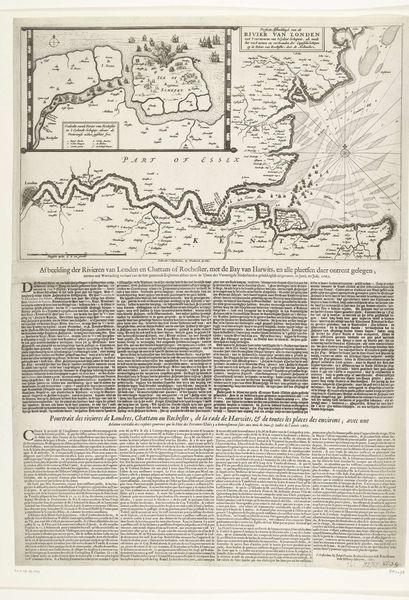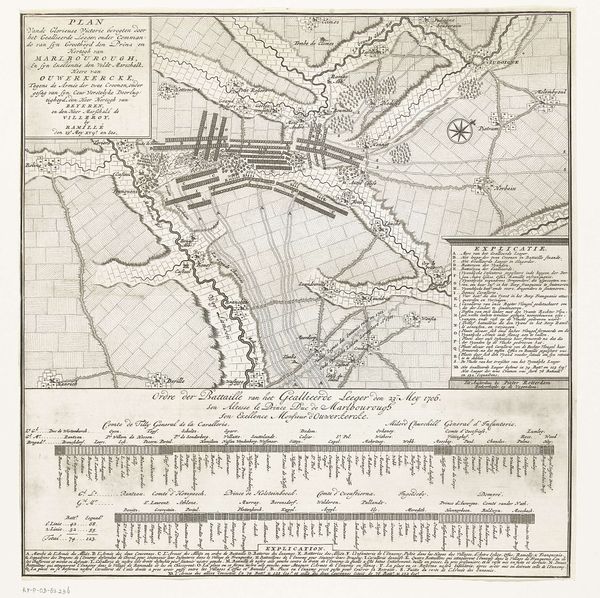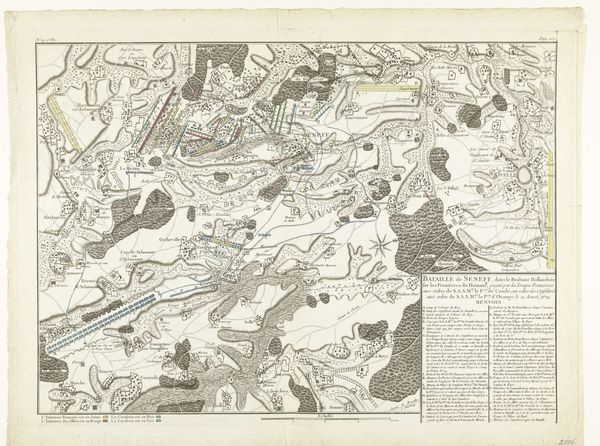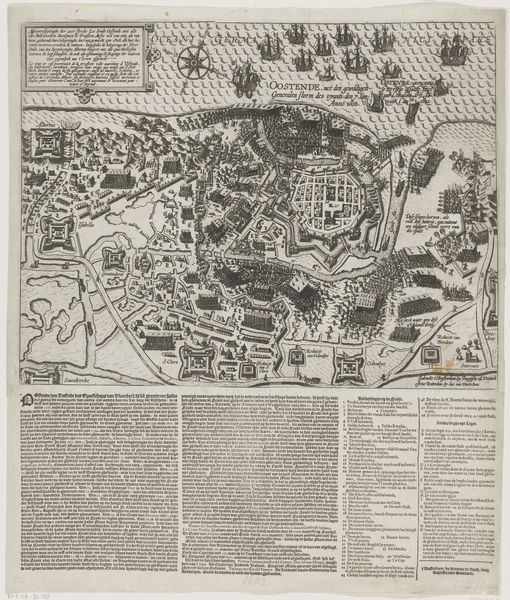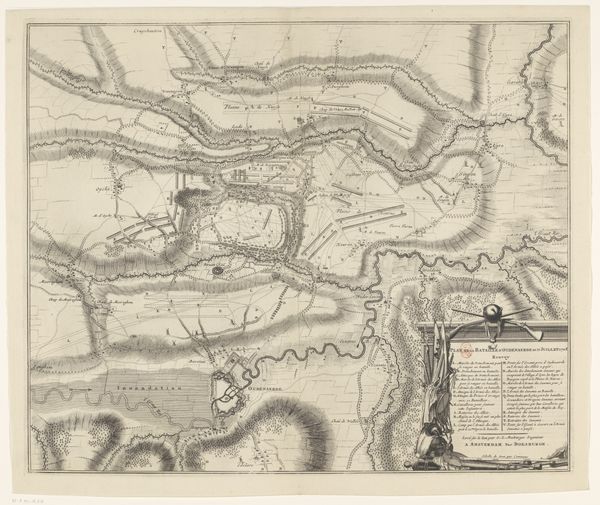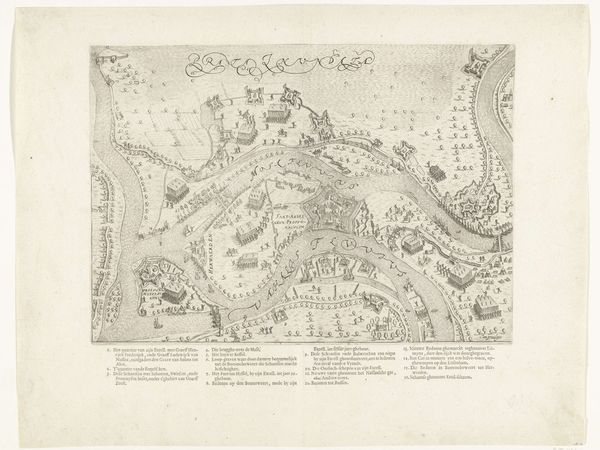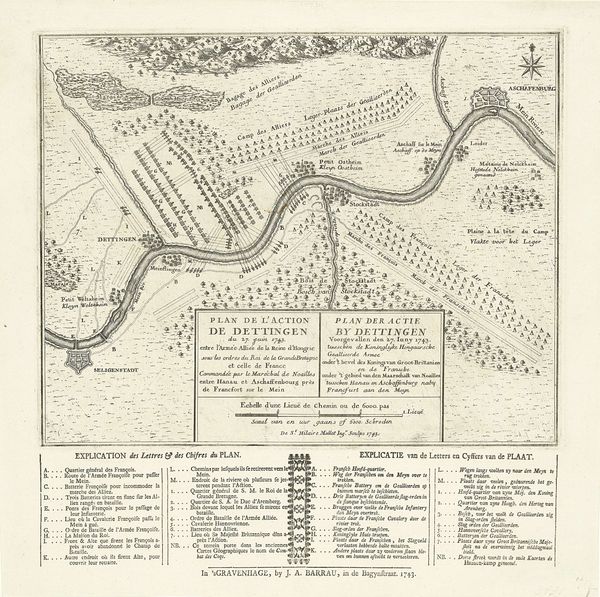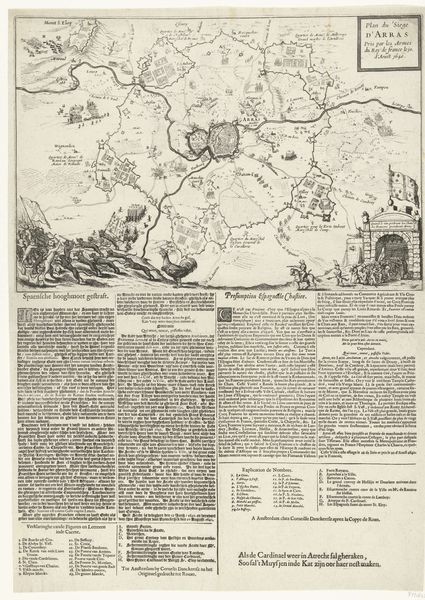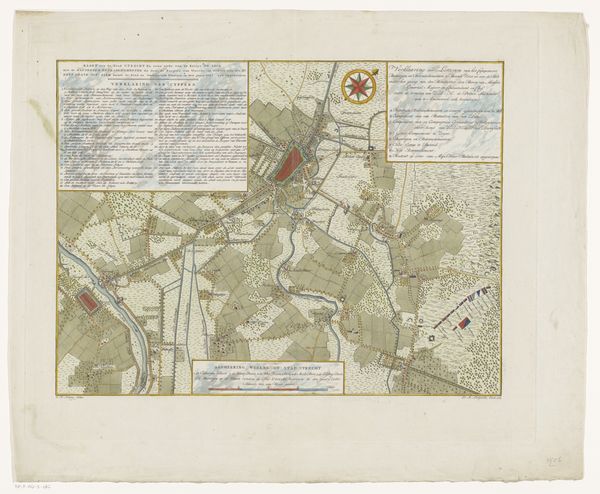
print, etching, paper, engraving
#
narrative-art
#
baroque
# print
#
etching
#
paper
#
history-painting
#
engraving
Dimensions: height 633 mm, width 836 mm
Copyright: Rijks Museum: Open Domain
Curator: At first glance, I perceive a remarkable confluence of information and visual economy, everything delineated with astounding clarity. Editor: Indeed, the piece before us, titled "Doorbraak van de Franse linies in Brabant, 1705" by Jan van Call, appears almost diagrammatic. It's an etching and engraving on paper, essentially a historical print memorializing a specific military action. Curator: The formal layout immediately strikes me. Note the stark contrast between the topographical rendering and the bordering texts, demanding a structured, analytical approach. It seems as if the intent is to simultaneously present and explain. Editor: Absolutely. What's key here is understanding this as more than just cartography; it’s historical propaganda. Consider the date, 1705 – this print likely served to solidify political narratives surrounding the Duke of Marlborough's victories, justifying military expenditures and solidifying power. Curator: The composition divides into segments - textual explanations on either side act as a frame, almost narrating the graphic center. What meanings arise from the color palette? Editor: The color palette, although muted by today's standards, highlights areas of conflict and control. Note how key geographical features and troop deployments are accented, visually structuring the narrative of dominance. The placement and language are also critical, French in this case. Curator: Examining the formal qualities, the intricate lines delineate armies, defenses, topography, allowing a micro-level visual investigation that enhances comprehension. How do we move beyond this formal appreciation towards something deeper? Editor: By contextualizing its use! These weren't just aesthetic objects; they were circulated, discussed, and interpreted within very specific social and political milieus. To truly understand the artwork, we must look beyond it and appreciate the world of images in shaping early modern political identity and military culture. Curator: Very insightful. Through both an understanding of its intrinsic structural elements and the socio-political context in which it was created and circulated, one truly recognizes how an image, like this, functioned in history. Editor: Indeed, it highlights that our interpretation itself exists within a continuum of ever-changing values assigned to historical conflicts represented by images.
Comments
No comments
Be the first to comment and join the conversation on the ultimate creative platform.

